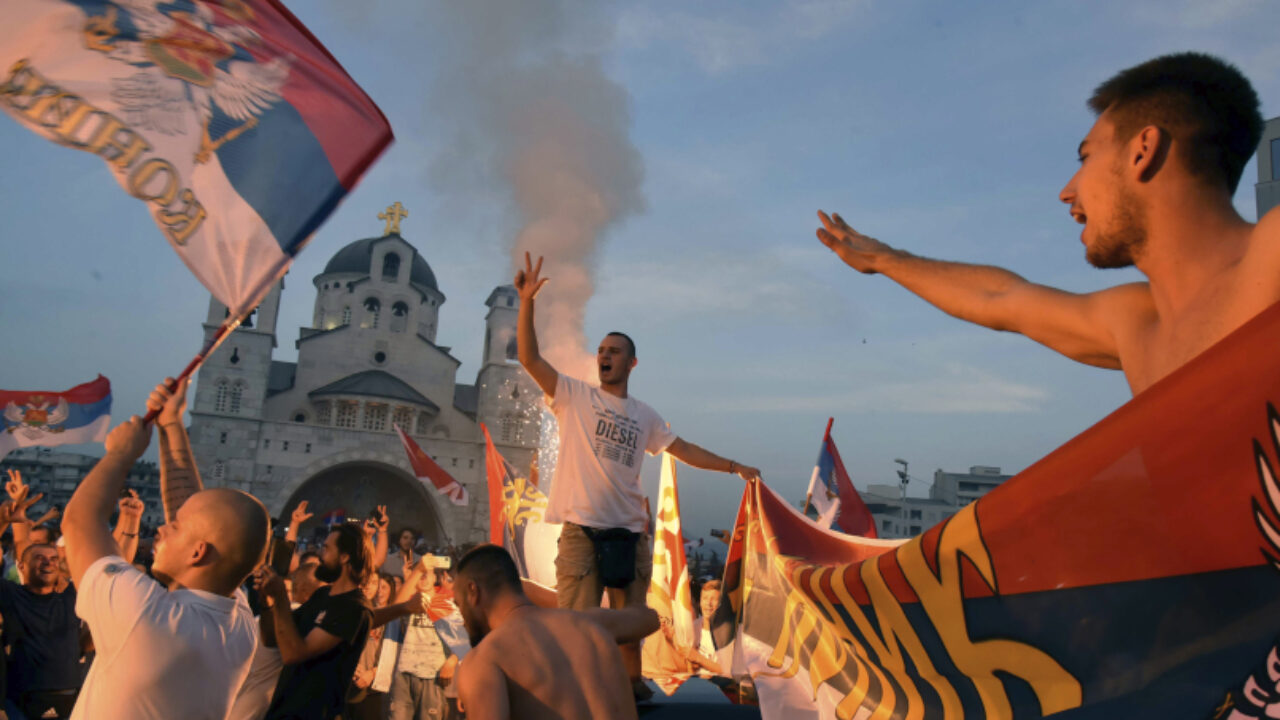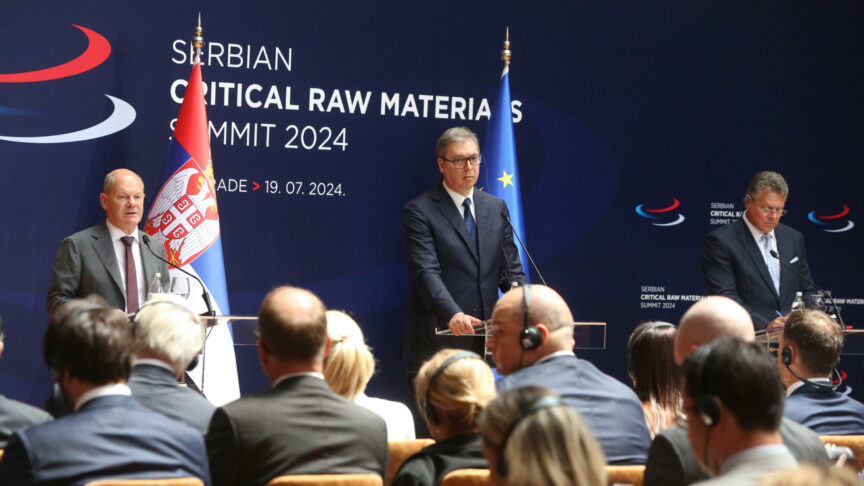What Montenegro’s future government means for the Western Balkans
Supporters of Western integration for Montenegro may look hopefully at the smallest – and pro-European – member of the new coalition. But wider forces are likely to overwhelm it.
Last month, Montenegro’s general election produced an unprecedented – and, for many, unexpected – outcome, one that may prove highly significant for the political landscape of the Western Balkans. For the first time in 30 years the Demokratska Partija Socijalista (DPS) will not be entering government. Led by the country’s president, Milo Djukanovic, the DPS has dominated the national political scene since Montenegro’s first multiparty elections in 1990. Instead, three broad coalitions, with diverging political platforms, have between them mustered 41 seats in the parliament, which is the bare minimum needed to form a governing majority. They have already signed an agreement on the principles for the new coalition, which will consist of no fewer then 20 parties. These three political blocs’ predominant narrative is ‘Out with the old, in with the new’; but a closer look at the parties and their leaders yields a more complex picture, one that could turn out to be destabilising for Montenegro and the region.
Of these three blocs, the largest (Za Buducnost Crne Gore, ZBCG) is a broad coalition of ethno-nationalist, clerical, conservative populist parties with a heavy pro-Serbian, pro-Russian, anti-NATO, and Eurosceptic platform. Most of their leaders headed the campaign in favour of maintaining the State Union with Serbia during the 2006 referendum on independence. Their 27 MPs mainly come from Demokratski Front (DF), a coalition whose two leaders, Milan Knezevic and Andrija Mandic, each received five years in prison for setting up a criminal organisation that stood behind the failed Russian-backed coup d’état on the eve of the October 2016 parliamentary election. The Serbian Orthodox Church and pro-government media outlets in Serbia openly supported the DF’s election campaign. This was accompanied by a significant cyber intrusion of internet bots and trolls from Serbia on various social networks.
The second largest bloc in the new majority centres around a relatively new populist party, Demokrate Crne Gore (DCG), led by Aleksa Becic. While this bloc is portrayed by many as civic opposition, the leader is a former youth leader of the Socijalisticka Narodna Partija Crne Gore (SNP), a party that was the main voice in favour of the union with Serbia and a loyal ally of Slobodan Milosevic until his ousting in 2000. Though DCG has tried to rebrand itself as civic and pro-European, for the last four years its elected members of parliament refused to take their seats – in direct defiance of EU appeals to do so. This subsequently allowed them to avoid having to take a position on Montenegro’s 2017 accession to NATO. It also allowed them to openly side with the Serbian Orthodox Church during the anti-government protests.
Another party in this bloc is Demos. Its leadership splintered from the right-wing parties currently in the largest bloc described above. Demos is a fringe conservative party led by Miodrag Lekic, who was Yugoslav ambassador to Italy under Milosevic and was once the leader of the DF and that party’s candidate for the presidential election in 2012. He remains one of the most vocal critics of the outgoing government’s decision to align with EU sanctions against Russia.
The third coalition, and the true linchpin of the future ruling majority in the parliament, is Ujedinjena Reformska Akcija (URA). This is a civic, green, and pro-European party. It has only four MPs, who were elected on 5.2 per cent of the vote. The expectation of optimistic pundits is that this party will keep the two bigger ones in check, a proposition which many – justifiably – doubt.
Formally, the leaders of the three parties dominating each bloc have agreed on a minimum set of principles as a foundation of their governing coalition. They have officially committed not to retract Montenegro’s recognition of Kosovo or leave NATO. They have also agreed to form a technocratic government that would continue the process of accession to the European Union.
The coalition may use day-to-day policy and discourse to enact a more assertive pro-Serbian, pro-Russian, anti-NATO, and anti-Western politics.
Yet it is not at all evident that such a heterogenous association of broad coalitions with conflicting ideological backgrounds will indeed uphold these core policies, which in many ways contradict the platforms and track records of the two largest blocs. The key question is not whether the coalition will stick to its pledge to stay in NATO and not to derecognise Kosovo – it will probably not rush to do so. Instead, the coalition may use day-to-day policy and discourse to enact a more assertive pro-Serbian, pro-Russian, anti-NATO, and anti-Western politics.
There are several possible risks to watch out for.
Firstly, it will be critical to watch appointments in, and the control of, the security sector. If DF establishes its control over the security sector, the new government could be inclined to deepen ties with the Serbian and Russian security services. Under such a scenario, the government could effectively undermine NATO membership obligations from within the organisation.
Secondly, and on a related point: given the pronounced ideological orientation of the largest parties towards Serbia and Russia, it is unclear that the new government will indeed stick to Montenegro’s international commitments. Under the previous government, Montenegro’s foreign policy alignment with the EU was at 100 per cent. By comparison, Serbia’s alignment with EU positions has progressively dropped to 48 per cent. Considering the track record of DF and allied parties to advocate the alignment of Montenegro with Serbia, it is unlikely that they will maintain Montenegro’s recent foreign policy course. This could affect issues like the renewal of sanctions against Russia over Crimea, or compliance with EU policies on Ukraine, Kosovo, and other regional matters. The blocs’ pledge not to revoke the recognition of Kosovo could be effectively undermined if the new government discontinues the existing practice of supporting Kosovo’s application to join various regional and international organisations.
Thirdly, the new government has pledged to revoke the Law on Freedom of Religion, which, among other things, requires the Serbian Orthodox Church to register officially. The Serbian Orthodox Church is the only religious institution not registered in this way in Montenegro. It operates in a legal vacuum while pursuing both a political agenda and its economic interests: the church claims ownership over vast stretches of land and real estate, and operates hotels, restaurants, travel agencies, but has no formal status. This legal grey zone will most likely remain intact under the protection of the new government. Furthermore, according to the 2011 Strategy of the Serbian Government, the Serbian Orthodox Church has a central role in preserving and strengthening ties between Serbia and Serbs living elsewhere in the Western Balkans. In Bosnia and Kosovo, this has translated into political meddling by the government in Belgrade, which has undermined political and societal cohesion in both countries. Similar trends could emerge in Montenegro if the new government, working in tacit concert with the Serbian Orthodox Church, creates an entry-point for Belgrade to exert control over the internal affairs of Montenegro. A true litmus test of this interference will be next year’s census in Montenegro, as Serbian authorities have already announced their interest in boosting the demographic ratio of Serbs in Montenegro. In addition, the new government may seek to revise the Citizenship Law as well. If revised in line with DF preferences, the new law will allow a sizable number of Serbian citizens to obtain dual citizenship with Montenegro. This could hugely alter the national and potentially electoral dynamics of the country.
The prospects are very slim that URA and its small bloc of inexperienced parties will act as an effective check on the two other blocs. It is unclear whether they will even have sufficient insight and control over the affairs of their coalition partners. A possible scenario is that they end up leaving the coalition, which could weaken the party and its allies in the face of the new elections that would inevitably follow. If Montenegrins go to the polls again, they may be likely to reward the larger blocs exploiting newly established levers of power, continued support from Belgrade, and the mobilising power of the Serbian Orthodox Church – and thus create even greater uncertainty about Montenegro’s Western path.
Sinisa Vukovic is a senior lecturer and associate director of the Conflict Management Program at Johns Hopkins University, School of Advanced International Studies (SAIS).
The European Council on Foreign Relations does not take collective positions. ECFR publications only represent the views of their individual authors.



